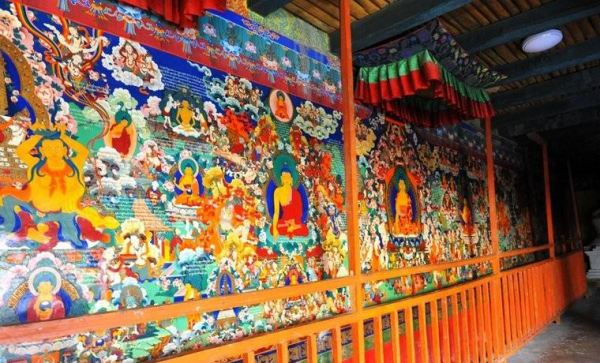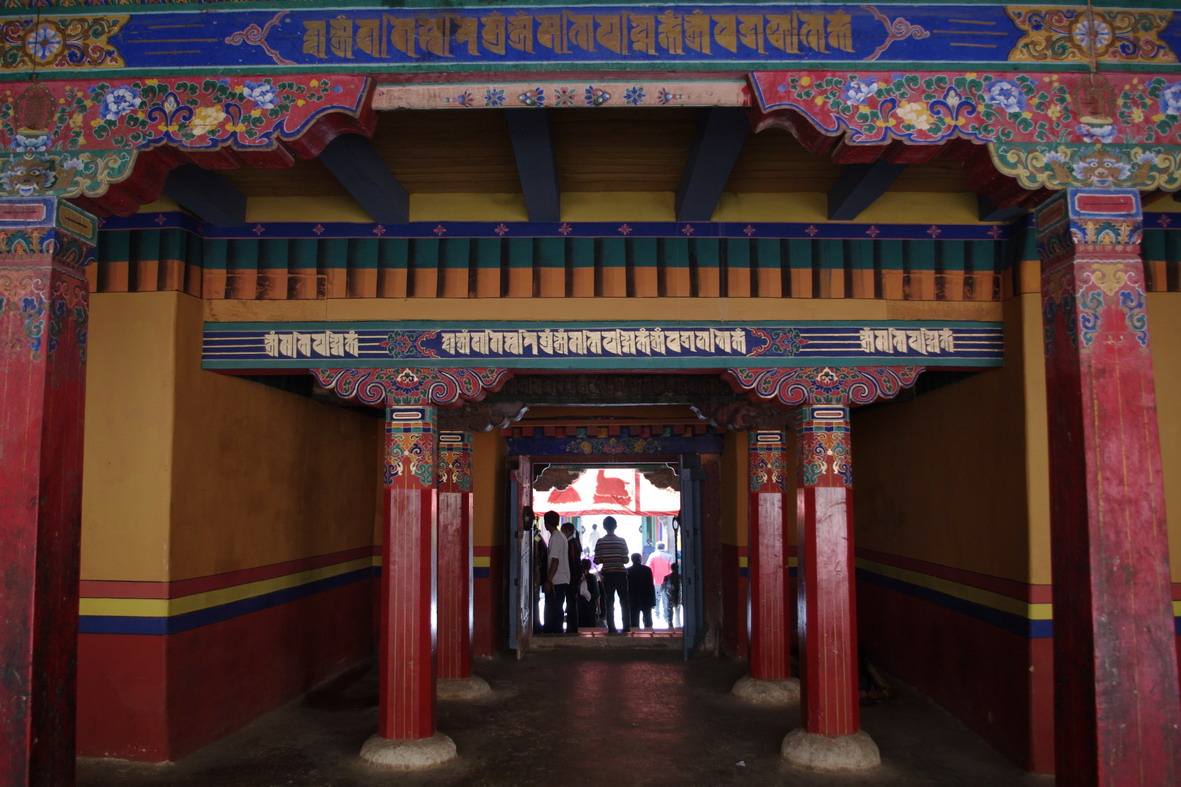Chinese Name: 昌珠寺 Pronunciation: chāng zhū sì
Admission Ticket Fare: 70 yuan
Opening Hours: 09:00-16:00
Suggested Visiting Hours: 1-2 Hours
Building Time: Songtsen Gampo period (617-650)
Building Function: To commemorate the great deeds of Songtsen Gampo
Address: Changzhu Town, Naidong District, Shannan City, Tibet Autonomous Region, China.

The Trandruk Monastery is located at the southern slope of the Mt. Ganpo River, which is about two kilometers (one mile) from the Tsedang Town. In Tibet, Trandruk refers to a roc and a dragon. The evil dragon often troubled the life of the people who lived near the lake. To defeat the dragon and make the life of the locals back to normal, Songtsen Gampo became a roc and fought with the dragon.
At last, the dragon was defeated and killed. Therefore, in order to commemorate the great deeds of Songtsen Gampo, the Trandruk Monastery was built.
The Trandruk Monastery is made up of two main buildings: the Naiding Lakang (a chapel) and the Main Assembly Hall (also called Tshomchen). The Naiding Lakang, which consists of two floors, is said to be the oldest chapel in the history of monasteries.
The Songtsen Gampo’s statue is on the first floor, and other Buddhas are worshiped on the second floor. The Tshomchen consists of the courtyard, the Great Hall and the cloister. On the walls of the corridor were painted with murals and the images of Lobsang Gyatso who was the fifth Dalai Lama and other famous hierarchs. There are 12 Buddhist chapels in total in the Grand Hall, among which Cuoqing Lakang is the main one.

Trandruk Monastery was originally small in scale, with only six gates, six columns and Zula Kang. And then, the temple has undergone three large-scale repairs and expansion on the original building.
The temple history records that Gongma Situ Bodhi of Naidong once had a big deal to build the temple. Therefore, the time of this building should not be earlier than 1351AD. During this construction, more temples were added. It was said that this construction laid the basic structure for the future of the Trandruk Monastery.
During the time of the fifth Dalai Lama, many repairs and reconstructions were made to the temple. The golden roof of the main hall and the gate tower of the Cuoqin Main Hall were added. Except for the few original buildings, the rest was rebuilt and added during the time of the fifth Dalai Lama.
The seventh Dalai Gesang Gyatso once also made some reconstruction to the temple. After this renovation and expansion, the scale of the temple had been enlarged by 100 times. Then, it covered an area of 4667 square meters( 81 meters long, 57.6 meters wide).

Pearl Thangka is regarded as the treasure of the temple as well as a rare treasure in the world.
The Pearl Thangka in Trandruk Monastery is one of the most famous and precious scroll paintings. With a length of 2 meters(6.56 feet) and a width of 1 meter (3.28 feet), this unique scroll painting is made with over 29,000 pearls, 2,000 coral beads, 180 turquoises. It is the description of the portrait of Kwab-Yin in a relaxing carriage which is decorated with propitious clouds, flowers, birds and petals.
There is a bronze bell hanging in the corridor of the temple. The inscription on the bell says that this bronze bell was made under the supervision of the Han Bhikkhu Ren Qin and was donated by the third concubine Tithi of Chidesan, who is the 40th Btsan Po (798AD - 815AD). This bronze bell is the historical evidence of the close cultural and religious exchanges between the Tang and Tibet.

The remaining precious masks of Leaping God in the Trandruk Monastery represent the Buddhas and the images of eminent monks and saints in the successive dynasties. In addition, the temple also has the murals of the Tubo Period, with the walls of the exquisite new murals setting each other off.
Take a bus from Lhasa Beijiao Bus Station to Tsedang Town and then charter a local car to the Trandurk Monastery.
Chinese: 请带我去昌珠寺。English: Please take me to the Trandruk Monastery.
